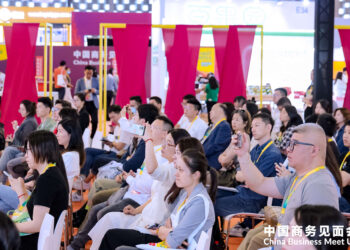No products in the basket.
TSUKUBA, Japan, Feb. 6, 2024 /PRNewswire/ — Researchers from the Research Center for Materials Nanoarchitectonics (MANA) have introduced a doping method to achieve accurate and consistent conductivity for organic semiconductors.
Image: https://cdn.kyodonewsprwire.jp/prwfile/release/M105739/202401295845/_prw_PI1fl_B5KMh4cs.jpg
Organic semiconductors consisting of polymers are important for the development of flexible electronic devices. However, achieving consistent conductivity using current doping methods is challenging. Doping involves the addition of dopants to the semiconductor via a redox reaction to increase the density of charge carriers. However, the process is sensitive to the reaction atmosphere and impurities, particularly water, which deactivates the dopants.
In a new study, a research team led by Dr. Yu Yamashita from MANA, in collaboration with Dr. Masaki Ishii (first author) from MANA, has now developed a simple doping method capable of producing organic semiconductors of desired conductivity levels. The method is based on the proton-coupled electron transfer reaction (PCET) observed in biochemical processes.
In PCET, protons and electrons are simultaneously transferred between two molecules. This reaction provides a way to convert an organic semiconductor into a p-type doped state by encouraging a molecule to accept electrons from the semiconductor. For the doping process, the researchers immersed PBTTT, an organic semiconductor, in an aqueous solution containing benzoquinone (BQ), hydroquinone (HQ), and hydrophobic molecular anions. BQ receives protons from the aqueous solution along with electrons from PBTTT. The electron transfer from the organic semiconductor increases the number of holes in the organic semiconductor, changing its conductivity.
The advantage of this method lies in its reproducibility and pH-dependent controllability. Adjusting the solution’s pH allows precise control over the doping amount and, subsequently, the conductivity. “The Fermi level of the semiconductors was precisely and reproducibly tuned by the pH of the doping solution,” says Dr. Yamashita. Moreover, such precise doping was conducted in ambient air for the first time, demonstrating unprecedented scalability suitable for device manufacturing.
This innovative doping method offers a cost-effective approach for developing flexible and stable electronics, such as wireless sensors, energy-harvesting modules, biomolecular devices, displays, and solar cells.
Research Highlights Vol. 86
https://www.nims.go.jp/mana/research/highlights/vol86.html
Official website: https://www.nims.go.jp/mana/index.html
Source : New Leap in Flexible Electronics: MANA's Breakthrough Doping Innovation
The information provided in this article was created by Cision PR Newswire, our news partner. The author's opinions and the content shared on this page are their own and may not necessarily represent the perspectives of Thailand Business News.
Discover more from Thailand Business News
Subscribe to get the latest posts sent to your email.
Please login to join discussion










